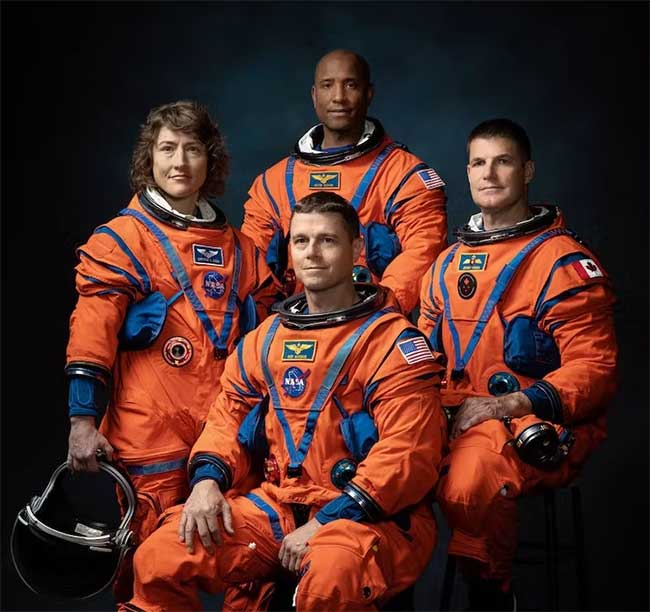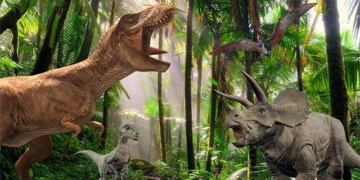The way NASA is diversifying the components of the crew for the upcoming Artemis II mission, which will orbit the Moon, reflects its plans for future collaboration.
On April 3, NASA announced four astronauts who will be part of the Artemis II crew, scheduled for a mission at the end of 2024. Artemis II will take these four astronauts on a 10-day mission to the Moon.
Although this astronaut team is not expected to land on the Moon, they will be the first to leave the vicinity of Earth and the first to approach the Moon in over 50 years.
This mission will also test the technologies and equipment necessary for future lunar landings and is a significant step in NASA’s planned journey back to the Moon’s surface.
As part of a new era in lunar and space exploration, NASA has outlined several clear goals. The agency hopes to inspire young people interested in space, make the Artemis program economically and politically sustainable, and ultimately encourage international cooperation in future missions.

The crew members of the Artemis II mission (from left to right) are Christina Hammock Koch, Reid Wiseman (seated), Victor Glover, and Jeremy Hansen. (Photo: NASA)
Who Are the Selected Astronauts?
The four members of the Artemis II crew are highly experienced, with three being Americans who have flown in space before. The remaining astronaut is a representative from Canada.
The mission commander is Reid Wiseman – a naval pilot. In his previous mission to the International Space Station (ISS), Reid spent 165 days in space and completed a record 82 hours of experiments in just one week. Reid also served as the chief of the U.S. astronaut office from 2020 to 2023.
The second astronaut is Victor Glover. With over 3,000 flight hours on more than 40 different aircraft, Glover was selected for the astronaut corps in 2013. He participated in the Crew-1 mission, the first to use a SpaceX rocket and spacecraft to send astronauts to the ISS.
The only woman on this mission is specialist Christina Hammock Koch. She has spent 328 days in space, longer than any other woman, during three ISS expeditions. She has also participated in six spacewalks, including three all-female spacewalks. Koch is a commercial engineer and previously worked at NASA’s Goddard Space Flight Center.
The final astronaut is Canadian Jeremy Hansen. Although he is a rookie in spaceflight, he has participated in space simulation programs such as NEEMO 19, where he lived in an underwater facility to simulate deep space exploration. Before being selected for the Canadian astronaut team in 2009, he was a pilot flying F-18 aircraft in the Royal Canadian Air Force.
Like Apollo astronauts, three of them started their careers as military pilots. Both Reid and Glover are test pilots trained like most Apollo astronauts.
Meanwhile, the female specialist Koch, with her technical expertise, exemplifies the modern astronaut. The role of space mission specialist enables individuals with a scientific background to undertake space missions.
A Collaborative, Diverse Future
Unlike the Apollo program of the 1960s and 1970s, with Artemis, NASA has focused on building a politically sustainable lunar program by promoting the involvement of diverse groups and nations.
The participation of other countries in NASA’s missions—this time Canada—is particularly important for the Artemis program and the Artemis II crew. International collaboration brings several benefits. First, it allows NASA to leverage the strengths and expertise of engineers, researchers, and space agencies from its allies and share technology production and cost burdens. It also helps the U.S. maintain its leadership role in space as competition with other countries, especially China, intensifies.
The Artemis II crew is also quite diverse compared to Apollo astronauts. NASA has repeatedly stated that the Artemis program aims to send the first woman and the first person of color to the Moon. With astronauts Koch and Glover, the Artemis II mission is a crucial step towards fulfilling that promise and inspiring future generations of space explorers.
The four astronauts on Artemis II will be the first to return to the vicinity of the Moon since 1972. The flight will take the Orion spacecraft on a journey around the Moon. During the flight, the crew will monitor the spacecraft and test a new communication system that allows them to send more data and communicate with Earth more easily than previous systems.
If all goes according to plan, by the end of 2025, Artemis III will mark humanity’s return to the Moon’s surface, with an even more diverse crew. Although the Artemis program still has a long way to go before humans set foot on the Moon again, the Artemis II crew demonstrates NASA’s commitment to approaching the mission in a diverse and collaborative manner.





















































